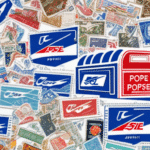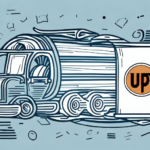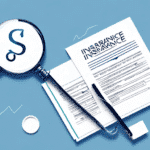Does First Class Mail Include Insurance?
When shipping items through the mail, understanding the insurance coverage of your chosen mailing option is crucial. First-class mail is a popular choice for sending small to medium-sized items, but it does not include insurance coverage by default. This article delves into the details of first-class mail insurance, including how to add it, the importance of insurance, and comparisons with other shipping options.
Benefits of First-Class Mail
Cost-Effective Shipping
First-class mail is one of the most affordable shipping options available, making it ideal for individuals and small businesses looking to send lightweight items without incurring high costs.
Delivery Speed
Typically, first-class mail is delivered within 1-3 business days, providing a reliable timeline for sending important documents and time-sensitive materials.
Variety of Packaging Options
First-class mail offers various packaging solutions, including envelopes, boxes, and padded mailers, allowing senders to choose the best option for their specific needs.
Tracking and Delivery Confirmation
Many first-class mail services include tracking and delivery confirmation, enabling you to monitor your package's journey and receive confirmation upon delivery.
The Importance of Mail Insurance
Protection Against Loss and Damage
Adding insurance to your first-class mail package provides financial protection in case your shipment is lost, stolen, or damaged during transit. This is especially important for valuable or fragile items.
Coverage for Shipping Errors
Insurance can help cover costs if errors occur during the shipping process, such as misdelivery or delays caused by the carrier. This ensures you are not financially responsible for mistakes outside your control.
Compliance with Shipping Regulations
Some carriers require insurance for certain types of items, including high-value goods or hazardous materials. Ensuring your package is insured helps comply with these regulations.
Adding Insurance to Your First-Class Mail
Through the United States Postal Service (USPS)
The USPS offers insurance options for first-class mail. You can purchase insurance based on the value of your items directly through the USPS website or at your local post office.
Using Third-Party Providers
Alternative carriers like FedEx and UPS also provide insurance services. These third-party providers may offer different coverage levels and pricing structures to suit your needs.
Shipping Software Solutions
Many shipping software platforms, such as ShipStation and Shippo, allow you to purchase insurance as an add-on service. These platforms often provide discounted rates compared to purchasing insurance directly from the carrier.
Handling Lost or Damaged First-Class Mail Packages
Filing a Claim
If your package is lost or arrives damaged, promptly file a claim with the carrier. For USPS, you can start the process through their claims page.
Required Documentation
Be prepared to provide necessary documentation, such as receipts, proof of value, and evidence of damage, to support your insurance claim. This expedites the reimbursement process.
Preventative Measures
To minimize the risk of loss or damage, use sturdy packaging materials, clearly label your package, and consider additional services like registered or certified mail for valuable items.
Pros and Cons of First-Class Mail
Advantages
- Cost-effective for lightweight items
- Quick delivery within 1-3 business days
- Various packaging options available
- Includes tracking and delivery confirmation
Disadvantages
- Basic service does not include insurance
- Weight and size restrictions apply
- Limited to small and medium-sized items
Comparing First-Class Mail Insurance with Other Shipping Options
Priority Mail
USPS Priority Mail offers higher insurance coverage as part of its basic service, making it a better option for more valuable or heavier items.
Express Mail
USPS Express Mail provides expedited delivery with comprehensive insurance options, suitable for urgent and high-value shipments.
Courier Services
Private courier services like FedEx and UPS offer extensive insurance and tracking features, often with customized solutions for businesses.
Best Practices for Safe and Secure First-Class Mail Shipping
Proper Packaging
Use high-quality packaging materials to protect your items. Ensure that packages are securely sealed and cushioned to prevent damage during transit.
Accurate Labeling
Clearly label your package with the correct address and contact information. Including a return address helps in case of delivery issues.
Utilize Tracking Services
Opt for tracking services to monitor your package’s journey. This provides visibility and peace of mind throughout the shipping process.
Insure Valuable Items
Always consider adding insurance for valuable or irreplaceable items to safeguard against potential loss or damage.
Conclusion
While first-class mail is an economical and efficient option for shipping lightweight items, it does not include insurance by default. By understanding the available insurance options and implementing best practices, you can enhance the security of your shipments and protect your valuable items. Whether you choose to add insurance through the USPS, a third-party provider, or a shipping software platform, having coverage ensures peace of mind and financial protection in the event of unforeseen shipping issues.






















